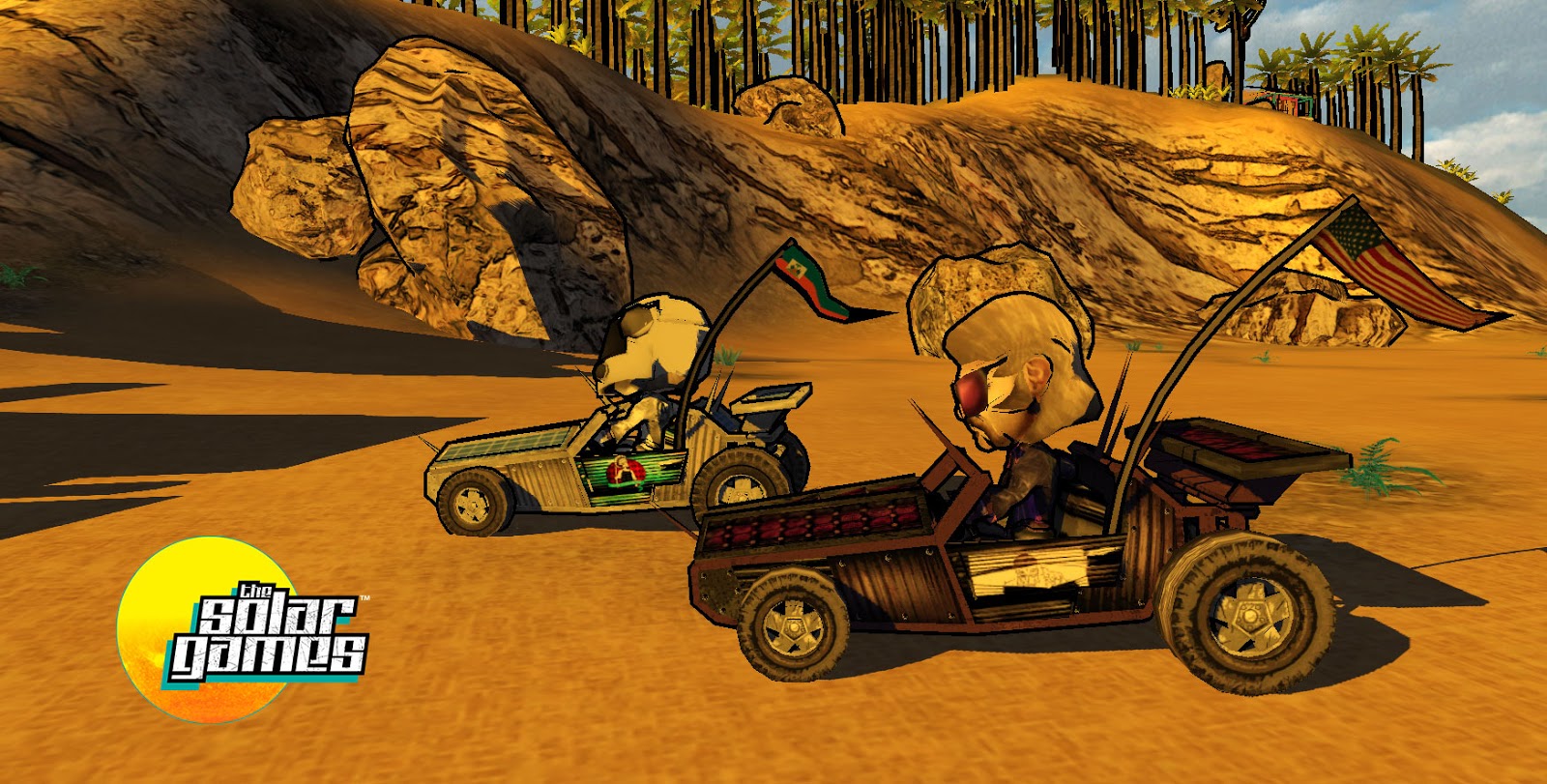Making Games for a Good Cause: The Solar Games
Hello everyone! Its been a couple of weeks since I last posted something on my blog. Today I'm happy to share a game project that I'm currently working on along with a group of talented people from the Orlando Area. This game project is called The Solar Games.
The Solar Games is a fast paced, solar-powered kart racing game being released for the mobile platform. The year is 2033. Global climate change efforts of the past 20 years have failed. The environmental apocalypse has arrived and it is causing strange mutations across the planet. The global community has one last hope by creating a race for change, an environmental Olympics... The Solar Games. A social impact video game that empowers players to create change in the world through a video game that provides energy solutions.
The first in the series, Solar Racing is akin to Mario Kart meets Fallout. The game is set in a post-environmental-apocalyptic world where the landscape is now a surreal wasteland which has become commonplace around the planet. The gameplay is fast, intense with a dose of humor. Players will be able to race in multiple modes, from single to multiplayer across realistic tracks based on real world locations: initially based on Haiti.
The most amazing part of The Solar games is that any player can play and have fun while support a great cause: rural electrification in Haiti. Over 80% of Haitians are without electricity. Half of the game's profits will go to help create solar-powered energy for residents so they can see after the sun goes down, refrigerate their food and medicine, and power local facilities, such as schools, medical centers, and place of worship around the neighborhood.
Here's how you can help:
We are trying to get the word out about The Solar Games so everyone can know about the project. We are launching a Kickstarter campaign running from August 5, 2013 to September 6, 2013 to raise the money we need to see the project to its completion.
Please forward this message or share our social media links to get the word out. And please donate on Kickstarter if you believe in the cause.
For more information about the game, you can look on the following links:
Website: www.thesolargames.com
Facebook: www.facebook.com/thesolargames
Twitter: www.twitter.com/thesolargames
Youtube: www.youtube.com/thesolargamestv
Instagram: www.instagram.com/thesolargames
Pinterest: www.pinterest.com/thesolargames
































